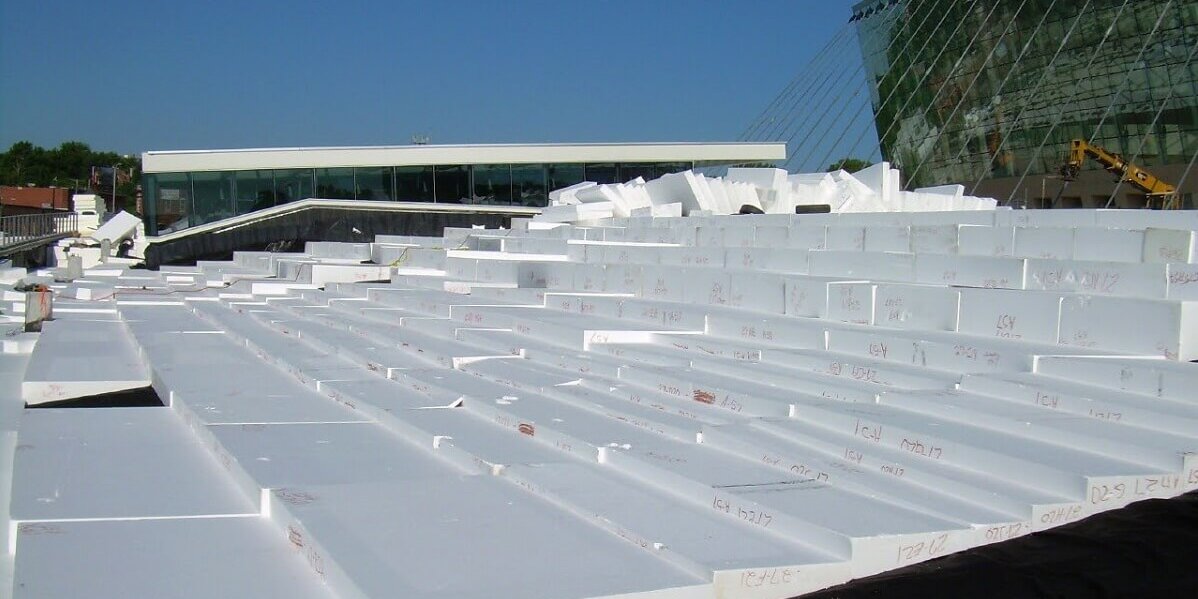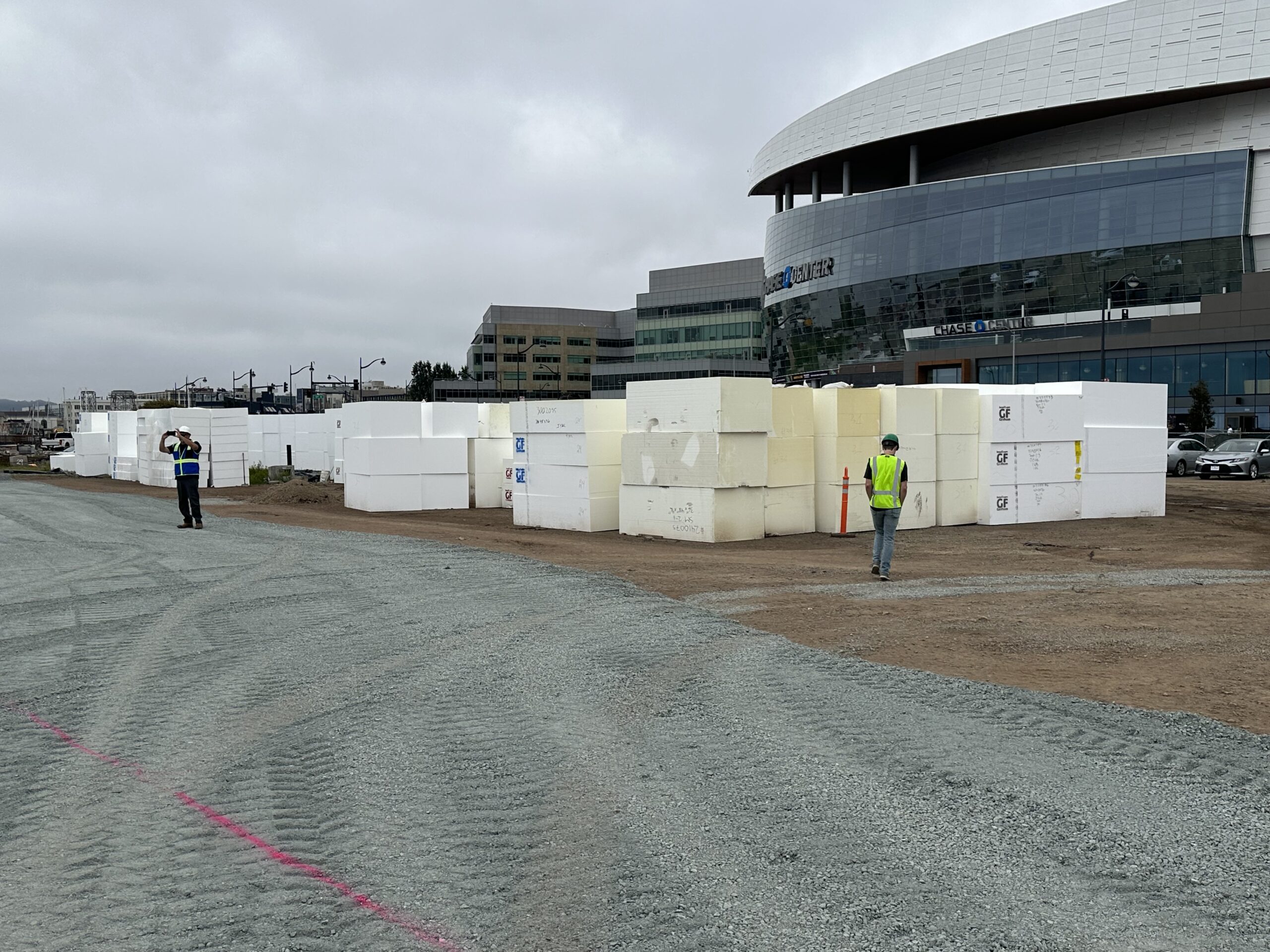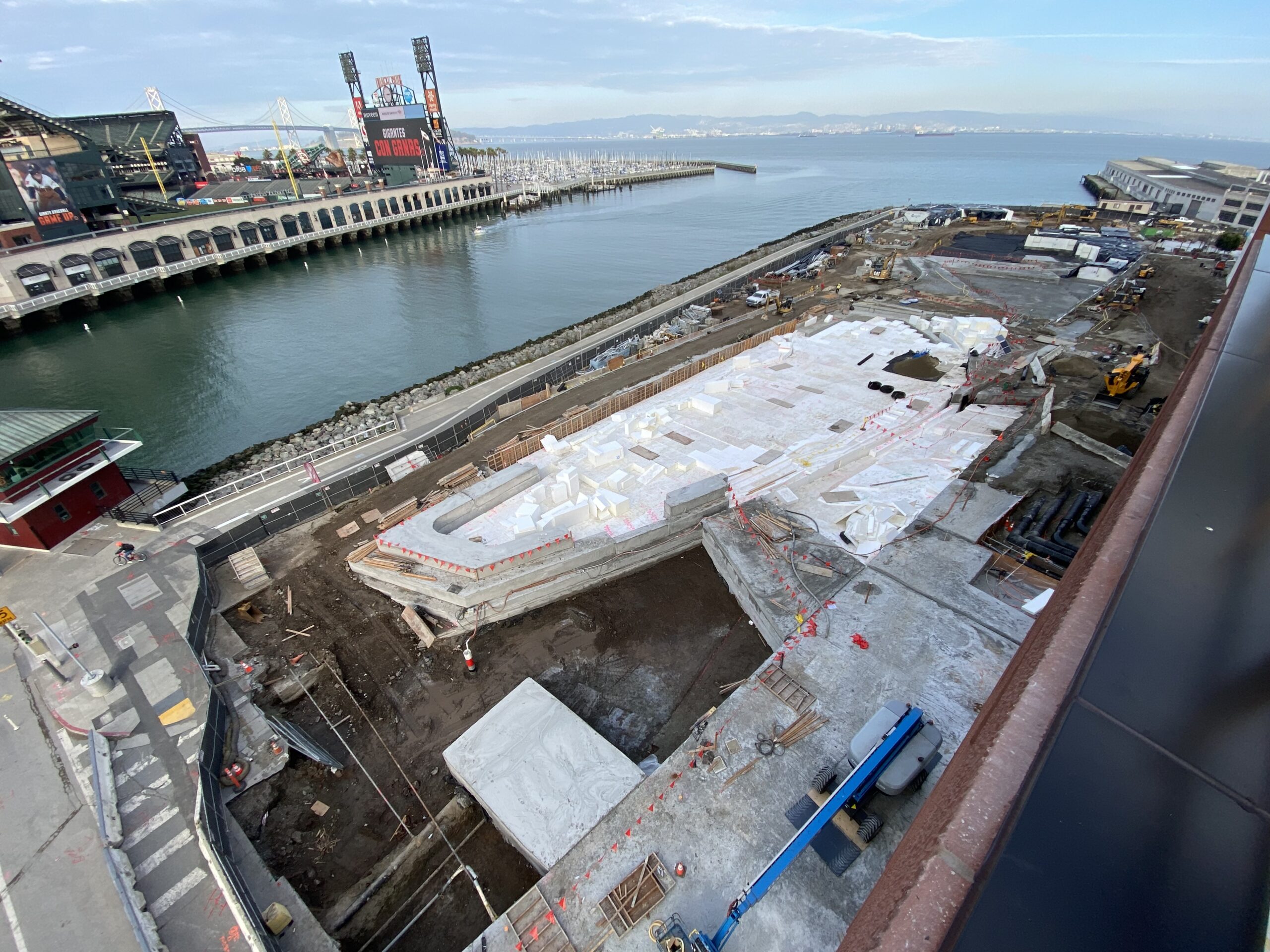Since it was first used on a construction project in Norway in the 1970s, EPS geofoam has been gaining traction globally. It has steadily been making inroads on traditional construction materials such as chipped bark, sawdust, dried peat, fly ash, slag, cinders, lightweight aggregates, shredded tires and seashells. In fact, the geofoam market is projected to grow from $786 million in 2019 to $1.069 billion by 2024.
The U.S. construction industry also has discovered that EPS geofoam is an excellent substitute for many traditional building materials. That’s partly because EPS geofoam is an approved material for new construction methods that are faster, more cost-efficient and safer.
Today there’s increasing demand for inclusion of EPS geofoam in construction projects in various areas of construction such as roads and highways, bridges, buried concrete structures, foundations, embankments and more. This has led to extensive use of EPS geofoam, with road and highway construction showing the most growth.
Here’s a look at how EPS geofoam compares with some of the most common fill materials and why you’ll want to consider using EPS geofoam for your next project!
Soil, Dirt and Rock
Soil is a living environment consisting of minerals, decaying organic matter, microorganisms and insects. Dirt is lifeless soil that lacks the nutrients to promote plant growth. Both are commonly used as fill construction materials for construction projects.
One issue with using raw materials like soil and dirt is that it can be toxic, contaminated with harmful substances. When used as structural fill, these toxic substances can enter commercial buildings via a process called vapor intrusion. In contrast, EPS geofoam is a clean fill. It is environmentally friendly and free of dyes, formaldehyde, chlorofluorocarbons (CFCs) and hydrochlorofluorocarbons (HCFCs) which may be harmful to the environment. In addition, EPS foam insulation blocks will not leach into the ground over time.
EPS geofoam is 98% to 99% air by volume. The air pockets that form during the manufacturing process make it a great thermal insulator. Unlike soil and dirt, EPS geofoam is not affected by the freeze-thaw cycle, and aging doesn’t affect its long-term thermal resistance. EPS geofoam provides frost protection by reducing the lateral earth pressure resulting from the frigid temperatures. That’s a big plus for a fill material, especially one used for road and highway and bridge projects.
EPS geofoam typically weighs up to 100 times less than other traditional fills with comparable compression strengths. As a comparison, it’s only 1% the weight of soil and dirt, which weighs 110 to 120 pounds per cubic foot. That’s an important factor for several reasons. First of all, EPS geofoam significantly cuts costs associated with transporting fill to the site location. Secondly, EPS geofoam blocks are so light they can be carried and placed in position by on-site construction workers. No heavy earth-moving or rock-moving machinery is required. That makes for a much easier, faster installation than working with soil, which must be packed down before proceeding to the next step. In short, using soil or dirt would require more labor, time and cost than completing the same construction project using EPS geofoam. Finally, ultra, lightweight EPS geofoam doesn’t put additional pressure or load on underlying soils, substructure units or adjacent structures, decreasing rotational and lateral movement.
Another added benefit of using EPS geofoam is that it doesn’t compact and settle like soil, dirt, rock and other traditional fills. Settlement is a serious concern for all foundation constructs from buildings to highways and bridges. Soil and dirt can be “pre-loaded” to mitigate shifting or decomposition, but that takes more manpower. It also delays the start of the construction project. Pre-loading dirt and soil still may not stop settlement, which is why EPS structural foam blocks are a much better choice.
Erosion is another factor to consider when selecting fill material. Erosion of backfill along the sides of bridge abutments is one of the most common causes of rotational movement. Soil, dirt and rock are subject to erosion, but erosion’s not an issue for EPS geofoam, which is known for its stability.
In fact, EPS geofoam excels in erosion control and soil remediation such as side hill projects that require stability to succeed. Since EPS geofoam is so lightweight, it reduces weight and pressure against the side of a hill, stabilizing it. Heavier fill such as soil, dirt or rock would have the opposite effect. In addition, soil and dirt attract moisture. But a sidehill project requires a fill material that is moisture resistant. The closed-cell structure of EPS geofoam makes it an ideal candidate for a fill that can help prevent future landslides and slope failure. Plus, EPS geofoam absorbs the impact of earthquakes and tremors rather than resisting it. That keeps the structure more stable.
Cellular Concrete
Cellular concrete is a lightweight foam concrete typically formed by combining cement, water and pre-formed foam. Historically, it was used primarily as a flooring and roofing material. However, in recent years it has become hailed as a pump-in-place lightweight fill material.
But cellular concrete has some issues. For one, it can be very difficult to achieve the correct mix, and its properties change according to the mix. Therefore, each batch may be inconsistent from one another and the mechanical properties may vary from the typical values cited in the literature. EPS geofoam, on the other hand, is consistent and predictable. If you plan a project with EPS geofoam, you’re assured of reliable results.
Cellular concrete also has a high potential of drying shrinkage. That’s because it contains up to 80% cement. Cellular concrete can be 10 times more susceptible to drying shrinkage than conventional concrete. The shrinkage value varies according to the initial moisture content, so getting the mix correct is critical. Stability of the material is also an issue that is dependent upon getting the mix correct. Instability can create significant problems in the design and construction process. By contrast, EPS geofoam is highly stable.
Another initial downside of cellular concrete is that it is challenging to deliver at high production rates. That could be an issue with large projects. EPS geofoam can be delivered just-in-time so you can complete your project on time, with no interruptions.
Installation is a snap with EPS geofoam. Construction workers can pick up the pieces, which can be factory pre cut and shaped for your specific project, and place them in the precise location. There’s little to no training required. The job can be completed quickly, efficiently and with no mess. In contrast, cellular concrete is typically poured into plastic-lined forms to prevent seepage. It takes a skilled and experienced construction crew to install it correctly. There’s a cure time involved as well as clean-up time, which also slows down the process. And, while EPS geofoam can be installed during inclement weather, cellular concrete installation is at the mercy of weather elements.
Since cellular concrete is a fluid material, it’s challenging to place on sloped surfaces. One construction method for remedying that is to place the cellular concrete in levels via a series of “lifts.” This method of construction requires additional framework and is more labor-intensive and time-consuming. Another installation issue with cellular concrete is that it requires groundwater seepage control in the excavation sites where it will be placed. This is necessary to prevent floating of the material.
In general, cellular concrete is a good insulating material for various projects. However, if it’s used in pavement subgrade, water can seep through the highly porous material, creating pooling. Seasonal differential cooling can cause ice to form, which expands and causes upheaval that can damage overlying pavements and structures. So, in areas where frost heave is an issue, cellular concrete probably isn’t the best fill material. EPS geofoam, on the other hand, has a better r-value than concrete itself, and it provides great frost protection for roads, reducing freeze-thaw cycles and road damage.
Wood and Wood Products
Like all organic products, wood and wood products are subject to environmental damage. Wood rots and deteriorates when exposed to the elements. Moisture and other substances make wood and wood products deteriorate faster. It is subject to both biotic agents — mold fungi, bacteria and insects such as termites, carpenter ants, carpenter bees, powder-post beetles and marine borers — and antibiotic agents such as sun, wind and water. Perhaps a more serious concern is that of stability. Chipped bark or sawdust will shift as it deteriorates, settling and creating an unstable foundation.
EPS geofoam has a strong compressive strength of up to 100 psi which means projects that utilize it are stable and experience minimal settling. The closed cell structure of EPS geofoam inhibits moisture absorption, the risk of mold or mildew growth. EPS geofoam won’t rot or decompose over time or leach into the ground. Since it is resistant to moisture and environmental damage, including insect infestation, it’s performance won’t be diminished over its long lifespan of approximately 100 years. That makes EPS geofoam a perfect below-grade fill for areas where moisture is a concern.
And, because factory-produced EPS geofoam has already gone through rigorous quality control inspections before it’s ever delivered to your job site, it behaves consistently. EPS geofoam blocks are uniform. That supports uniform load transfers and minimizes post-construction settling. You can’t say that about wood or wood products!







